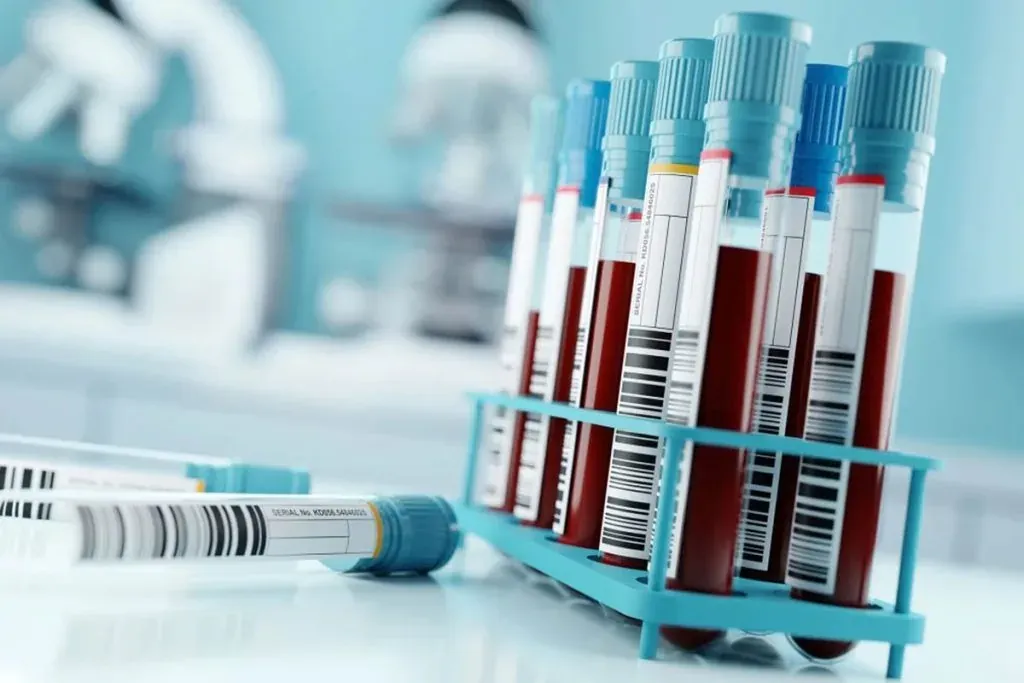Blood clotting disorders are a group of conditions where the complex process of blood clotting (coagulation) does not function correctly. This can lead to two primary types of problems:
- Bleeding Disorders: The blood clots too slowly or not at all, leading to excessive bleeding.
- Thrombotic Disorders: The blood clots too easily or too much, forming dangerous clots (thrombi) inside blood vessels that can block blood flow.
Understanding the signs, risks, and diagnostic approaches for these clotting problems is vital for health management in Nigeria.
Types & Consequences of Blood Clotting Disorders
Each type of blood clotting disorder carries significant risks:
Bleeding Disorders (Insufficient Clotting)
These blood clotting disorders occur when the body cannot form clots properly to stop bleeding. A well-known example is Haemophilia.
Someone with a bleeding disorder may experience:
- Prolonged, excessive bleeding after even minor injuries, dental work, or surgery.
- Easy or unexplained bruising.
- Frequent nosebleeds.
- Spontaneous bleeding into joints (causing pain and swelling), muscles, or even vital organs like the brain, which can be life-threatening.
Thrombotic Disorders (Excessive Clotting)
These blood clotting disorders involve the formation of unnecessary and potentially harmful blood clots within arteries or veins. These clots can lead to serious medical emergencies depending on their location:
- Deep Vein Thrombosis (DVT): A common manifestation where a clot forms in a deep vein, usually in the legs. Symptoms include swelling, pain, warmth, and redness in the affected limb. DVT itself is serious and requires treatment to prevent complications.
- Pulmonary Embolism (PE): A life-threatening complication where a clot (often from a DVT) breaks loose and travels to the lungs, blocking a pulmonary artery. Symptoms include sudden shortness of breath, sharp chest pain, rapid heart rate, sweating, dizziness, and potentially fainting or coughing up blood. PE requires immediate emergency care.
- Abdominal Blood Clots: Clots in vessels supplying abdominal organs can cause severe pain, vomiting, diarrhoea, and bloody stools (seen in conditions like ischemic colitis or acute mesenteric ischaemia).
- Heart Attack (Clot-Related): When a clot forms in or travels to a coronary artery supplying the heart muscle, it causes a heart attack. Symptoms include chest pain/pressure, shortness of breath, and pain radiating to the arm, neck, or jaw.
- Stroke (Clot-Related): An ischemic stroke occurs when a clot blocks blood flow to the brain. Symptoms appear suddenly and include facial drooping, arm weakness, speech difficulty (FAST), vision problems, severe headache, or loss of balance/coordination. Stroke is a medical emergency.
Risk Factors for Thrombotic Disorders
While bleeding disorders often have genetic causes, the risk factors listed below primarily increase the likelihood of developing thrombotic blood clotting disorders (forming unwanted clots):
- Being overweight or obese
- Having a personal or family history of blood clots or diagnosed clotting disorders
- Smoking
- Taking oral contraceptives or certain hormone replacement therapies
- Having liver disease
- Being over the age of 60
- Having a fracture, especially in the legs or pelvis
- Having congestive heart failure or other heart conditions
- Prolonged immobility (e.g., long travel, bed rest, sedentary work)
- Having certain types of cancer
- Recent major surgery or significant trauma
- Having COVID-19 infection (associated with increased clot risk)
- Having atherosclerosis (hardening/narrowing of the arteries)
- Having hypertension (high blood pressure)
- Having diabetes
Diagnosing Blood Clotting Disorders
Diagnosing blood clotting disorders accurately requires specific laboratory tests. If symptoms suggest either excessive bleeding or inappropriate clotting, or if you have significant risk factors, your doctor may order tests such as:
- Prothrombin Time (PT/INR): Measures how long it takes plasma to clot (evaluates the extrinsic pathway).
- Partial Thromboplastin Time (PTT): Measures how long it takes blood to clot (evaluates the intrinsic pathway).
- Platelet Count & Function Tests: Assess the number and effectiveness of platelets, which are crucial for initial clot formation.
- Specific Clotting Factor Assays: Measure levels of individual proteins involved in clotting (used for diagnosing conditions like haemophilia).
- D-dimer Test: Can help rule out thrombosis (like DVT/PE) in certain situations.
These tests help identify underlying clotting problems and guide appropriate management strategies.
Assessing Your Risk with HealthTracka
Understanding your personal risk factors and baseline clotting function is important when considering blood clotting disorders. HealthTracka’s Clotting Profile Test provides key information by measuring PT, PTT, and platelet count, offering insights related to your blood’s clotting ability.
This information can be valuable for discussions with your doctor about your risk for clotting problems and appropriate preventative measures.
Don’t wait for serious symptoms; understand your profile. Book your test easily online for convenient at-home sample collection in Nigeria.




